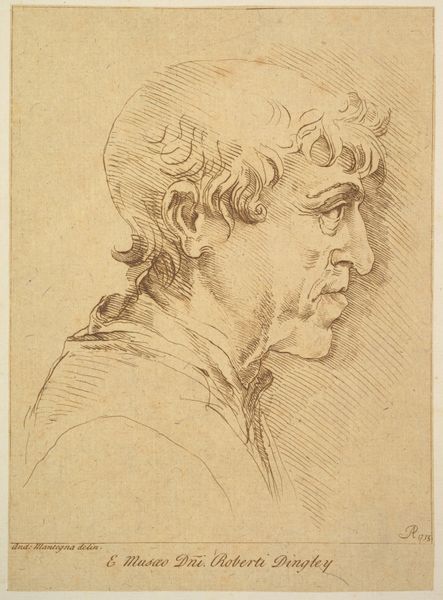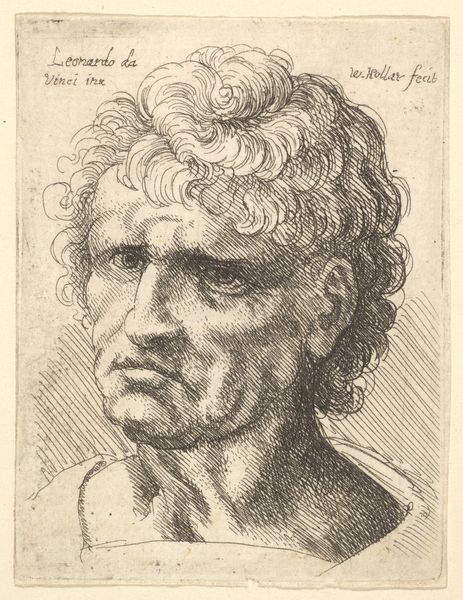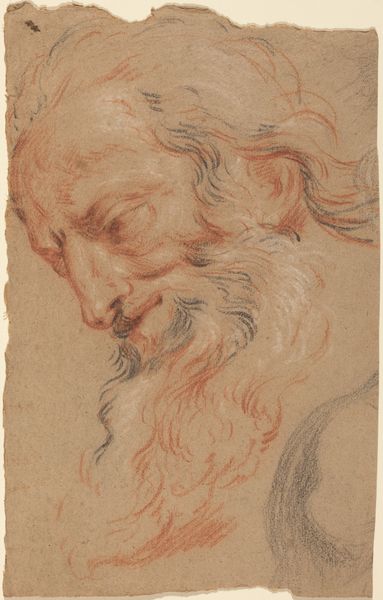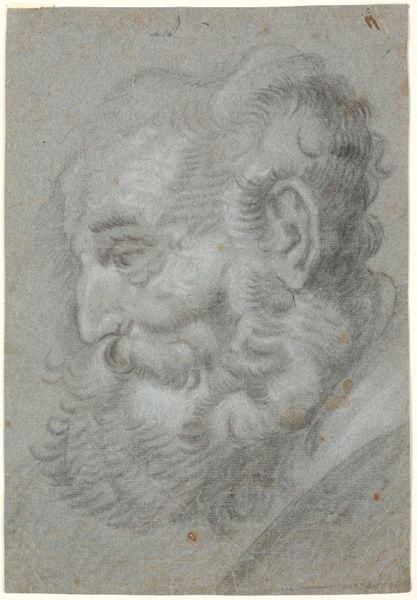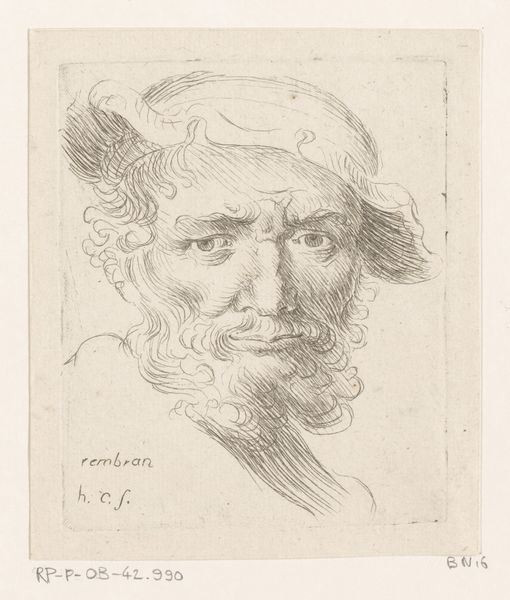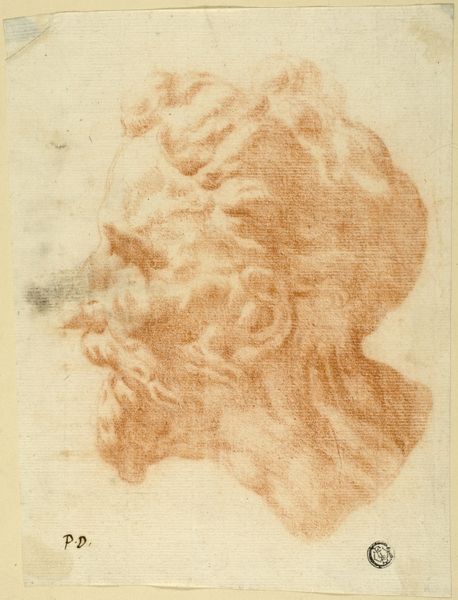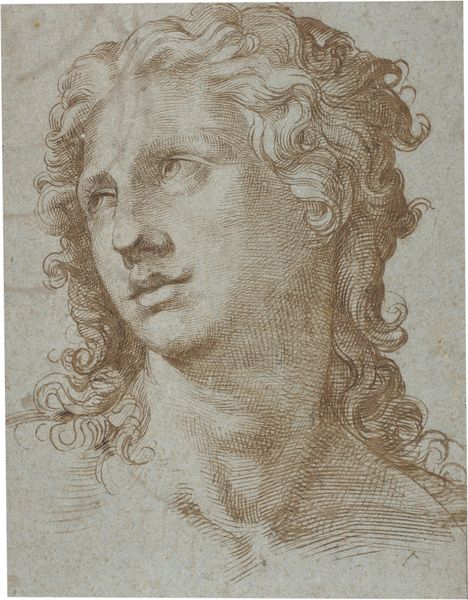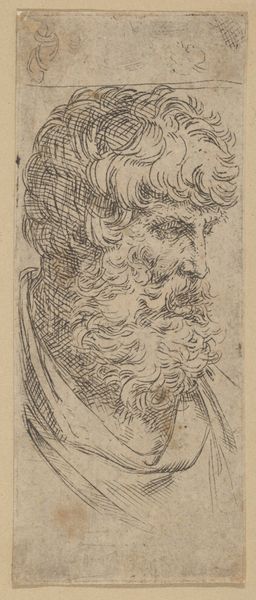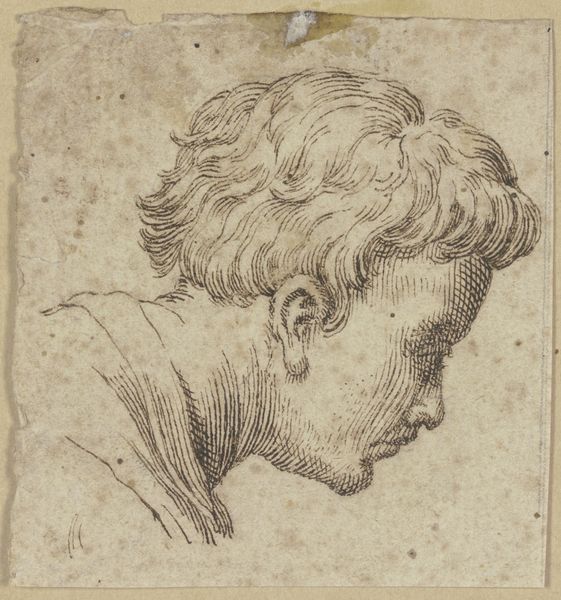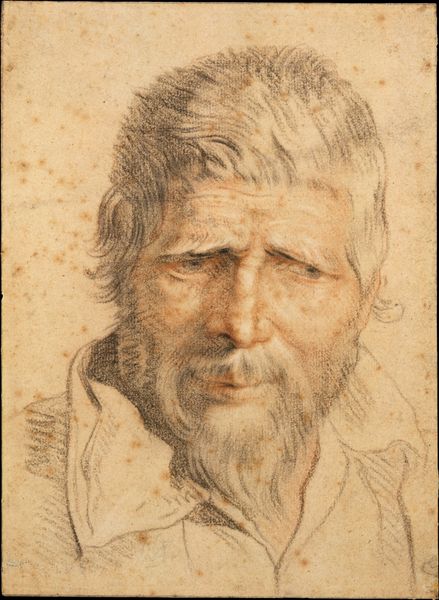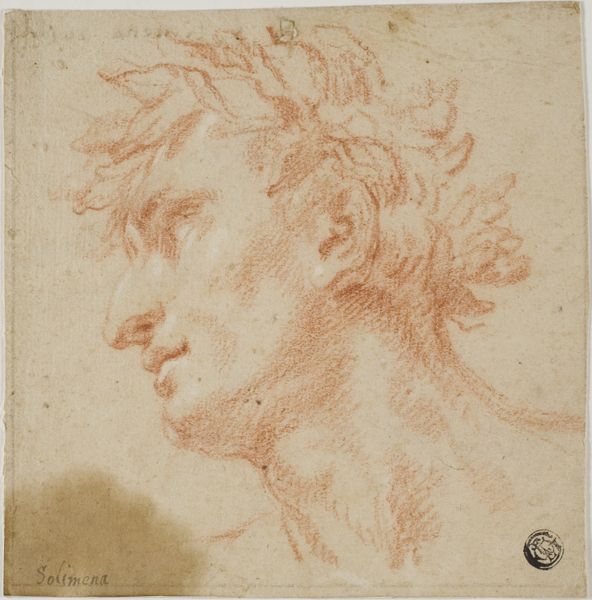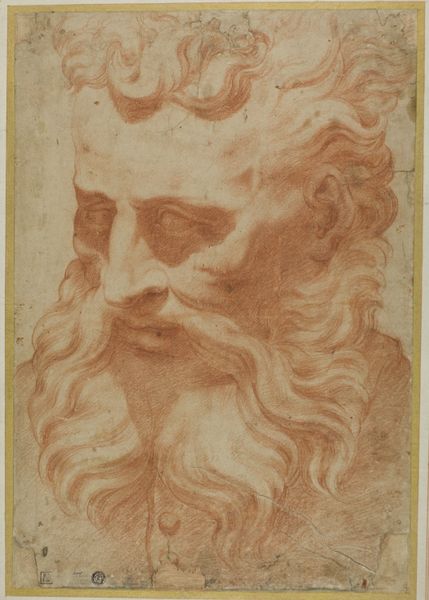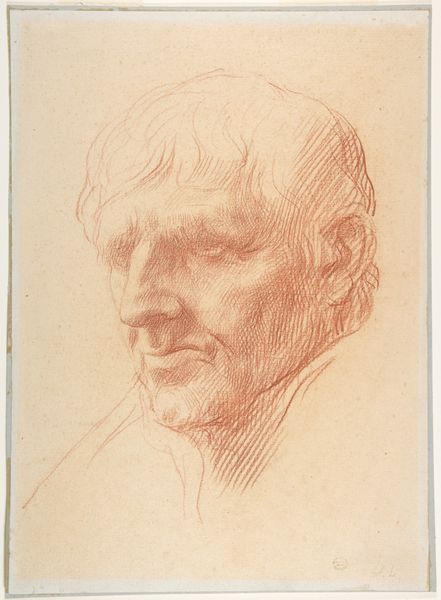
drawing, paper, ink
#
portrait
#
drawing
#
baroque
#
charcoal drawing
#
paper
#
ink
Dimensions: 10 7/16 x 6 15/16 in. (26.5 x 17.7 cm)
Copyright: Public Domain
Editor: Here we have Peter Paul Rubens’ “Bust of Pseudo-Seneca," created sometime between 1600 and 1626, using ink and charcoal on paper. I'm struck by the intensity of the gaze... the weight of what this man has seen, or perhaps the sternness of his judgment? How do you read this work? Curator: Ah, "Pseudo-Seneca"! The intensity you feel is delicious, isn't it? It speaks to the Baroque love of drama, no? Rubens isn't just drawing a face; he's giving us a glimpse into a soul. The cross-hatching, almost frantic, gives it that incredible energy. I think Rubens found the perfect medium for emotional portrayal. Did you know, though, it's likely not Seneca? That's a fun twist, isn't it? Adds another layer to the drama. Editor: Wow, it's like the piece has a secret identity. That frantic energy makes sense; the Baroque period was a time of turmoil and excitement, right? Did Rubens maybe see this “Pseudo-Seneca” as embodying some universal human truth about the struggles we face? Curator: Exactly! The man behind the supposed stoic philosopher isn’t as solid as it seems! Now you are speaking my language! Rubens distills emotion— the anxieties and struggles that feel evergreen to us. Tell me, do you see that same depth in other portraits of that time, or is Rubens really capturing something unique? Editor: I think you're right. This feels more raw, more… human. Maybe I should check out Rubens' other portraits. Curator: Yes! Look at his sons; even when depicting innocence, there's a current running underneath. Well, this has certainly enriched my understanding of how Rubens transcends the mere image. What about you? Editor: I'm walking away with the insight that art isn't static - interpretations evolve, and the piece might reveal its depths layer by layer.
Comments
No comments
Be the first to comment and join the conversation on the ultimate creative platform.
